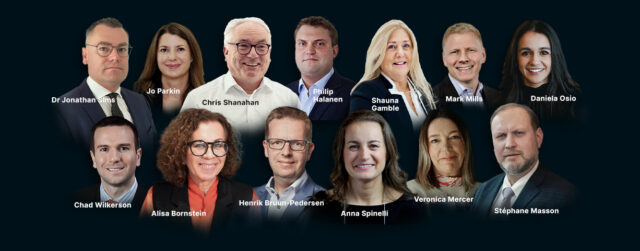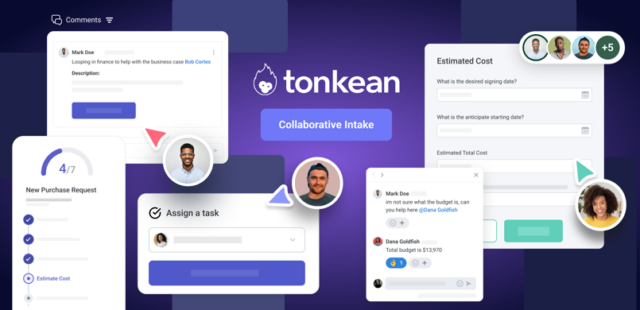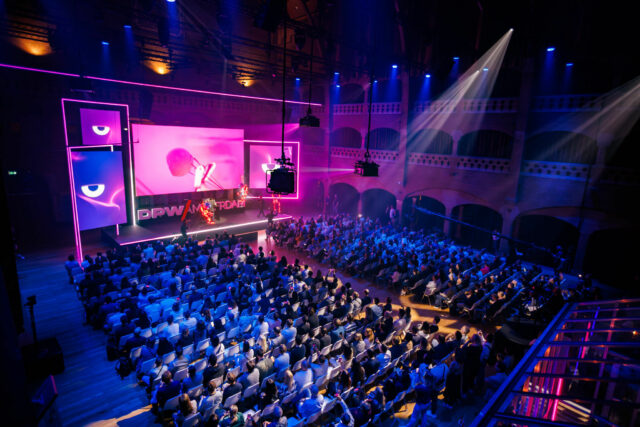Procurement is at a sliding doors moment – its direction of travel could go one way or another.
The influx of new technology makes procurement a dynamic and interesting industry in 2023. Following global challenges felt around the globe, procurement practitioners have had to step up in the face of adversity. To the industry’s credit, procurement has so far come through it but now it’s about embracing the world of today and finding ways to deal with pressing issues such as ESG and the knock-on effects of a war in Ukraine while also navigating inflation concerns. Of course, all this is on the back of COVID-19, of which the aftermath is still felt in some quarters.
In a recent CPOstrategy Podcast, Georg Rösch, Vice President Direct Procurement Strategy at JAGGAER, tells us all about how spend management giant JAGGAER is helping procurement teams overcome the challenging backdrop and discusses digitalisation strategies within the space.

The road in which procurement professionals end up where they do is always an interesting one. Can you tell us why procurement was the path you chose which led to your journey to JAGGAER?
Georg Rosch (GR): “I would say I stumbled into the procurement space. Growing up, I was always a technology person and had a very early interest in computers. When everyone was playing video games, I was playing around with software and started coding. Eventually, one thing led to another, and I found myself in a small procurement startup in Vienna in development. This is really where I found out that this is interesting stuff. 20 years later, it’s crazy to think I’m still doing it because I didn’t even know this field existed and I think that is felt industry wide. But I still love it and getting to combine procurement with technology is something I’m really interested in.”
In your view, how would you explain JAGGAER and sum up what differentiates it from other players in the space?
GR: “JAGGAER has been around for more than 25 years and came together through a lot of mergers and acquisitions. I came through from a branch that was local to Austria and the company has become one of the largest procurement software vendors out there. What I really like about JAGGAER is our vision of autonomous commerce. First of all, it sounds weird for a procurement software vendor not to have the word procurement in the tagline. But that’s done on purpose, because when you think about what a procurement software firm really does, it’s about communication and collaboration between buyers and sellers.
“For a while, JAGGAER was really good at the indirect procurement side which revolved around the whole P2P process. That’s really where a lot of our business came from. But this has evolved over the past 20 years into more of the source-to-contract process that’s being added which is proving so important. It’s not just the execution, but also the strategy of how you build everything and how you find the right sources. As part of autonomous commerce, we created four pillars. It’s networked, intelligent, comprehensive and extensible which spells NICE so it’s very easy to remember.”
Can you expand on the NICE strategy that JAGGAER has developed? What is its true meaning?
GR: “Networked basically means you collaborate with your suppliers, buyers, sellers, partners – everyone. It’s like the modern-day town square where the commerce happens – it’s the foundation of everything. Then it needs to be intelligent which means the question isn’t just about what data you have, but how do you intelligently use the data to drive the processes? Next, you have comprehensive. That encompasses all the functions you have starting from analytics, category management, supplier management, sourcing contracts, ePRO, supply chain management and quality management. It’s all of these beautiful things and how they work together.
“Finally, extensibility means a lot of different things. It means being open to communicating with other systems. With our platform, you can bring in a lot of external data – ESG and sustainability, risk, enriched supplier data, and more – from our partners into our solution. This allows you to make smarter decisions across the procurement cycle. Another aspect is that not every company is the same. Extensibility also means, ‘how can I tailor the solution to my needs?’ This completes the picture that we are working towards here at JAGGAER.”
The procurement space itself has undergone major transformation over the past decade and suddenly, it is so much more than just a back-office function out the way of everyone else. What has been the catalyst for its transformation in your opinion?
GR: “Procurement is really at a make-or-break moment. Supply chain and procurement have been really in the spotlight in the last couple of years. It’s been a case of ‘oh my, there aren’t any shipments coming anymore’ or ‘people are not buying the stuff that they bought before because our whole way of life changed.’ So, we were working from home, and we were not going out to restaurants or buying new clothes because we were all in our tracksuits all day. Society shifted. This meant procurement and supply chain management was really important because they needed to navigate all of this.
“This is why expectations and visibility of these functions rose during that time. But now we’re at a critical point. Can those functions deliver the value that they should? And can they continue this momentum? This is why I’m saying we’re at the make-or-break moment and there are a lot of companies that really made this transition and change to where procurement is an advisor to the business which is so critically important. Think about everything that’s not going away such as ESG with the environmental element, human rights and the governance of those different processes. Procurement is playing such a critical role of managing all these different agendas within our board level topics today.”
How is JAGGAER driving value to companies in a way that perhaps it didn’t before?
GR: “At JAGGAER in procurement, you want to cater to the most mature companies but many of your potential customers are not the most mature firms. It’s a challenge and that’s the balance that you need to strike. You have to be ahead of the curve and in front of the market, so we take this very seriously. We have a dedicated team that’s only working on what we call innovation to uncover questions like how do we use these new technologies? How can we bring this into the solution? How do we drive value for our customers with these things? We did this by coming up with what we call a maturity matrix, where you can see which step of the maturity scale you are on right now.
“It’s five steps in total but no one is at step five yet. The current technology that exists today is at step four, but the space is constantly changing. As a customer, they can measure where they are and say, ‘I might be a two at that process, but I’m a three at that’ and work out what needs attention. They can ask themselves the question, should I even do this? Does this make sense for me as an organisation? We really try to work with those maturity models because it helps us whenever we work with a customer to assess where they are and tell them this is where you can go, and this is what you can achieve by doing that.
“It helps us have the right conversations with our customers which was part of the vision of autonomous commerce. We have autonomous commerce as our North Star and know where we and the industry are aiming for, so it’s imperative our customers know the way too.”
How important is it that any technology introduced actually serves a purpose instead of being introduced for technologies sake?
GR: “People love technology, I love technology. But in business, we shouldn’t use a tool just because we like it. Tools should drive value. I won’t use something just because it sounds fancy. I’ll take whatever solution can truly solve the problem. At JAGGAER, when we evaluate solutions, we always consider what really helps us as an organisation and what drives value. At the end of the day, we are here to make our customers successful. And how is that success measured? Each customer might have different KPIs, but in the end, it’s driving valuation and value for the company. Value can look different for your organisation, whether it’s higher customer or shareholder value. We have to be very pragmatic about the means of how we help because what works for one company potentially doesn’t work for another.”
What does the future of procurement look like to you? How exciting/challenging does the road ahead look for the space?
GR: “I believe it’s continuing the path that we’re on right now which is bringing more data and market intelligence into the whole procurement process. Procurement overall has to move away from gut feeling decision-making. Success stems from bringing all the information that’s needed for procurement into a solution for data-driven decision making. What I’m seeing right now is more strategic information regarding important topics such as environmental impact and human rights. All of this should make a difference and influence the decision making in procurement. This is how procurement drives the sustainability agenda of the company and reliability across the supply chain. This is really where I see procurement going. It’s about taking in all this information, being the advisor to the business, and making the right decisions to drive the company strategy. The future is exciting.”











